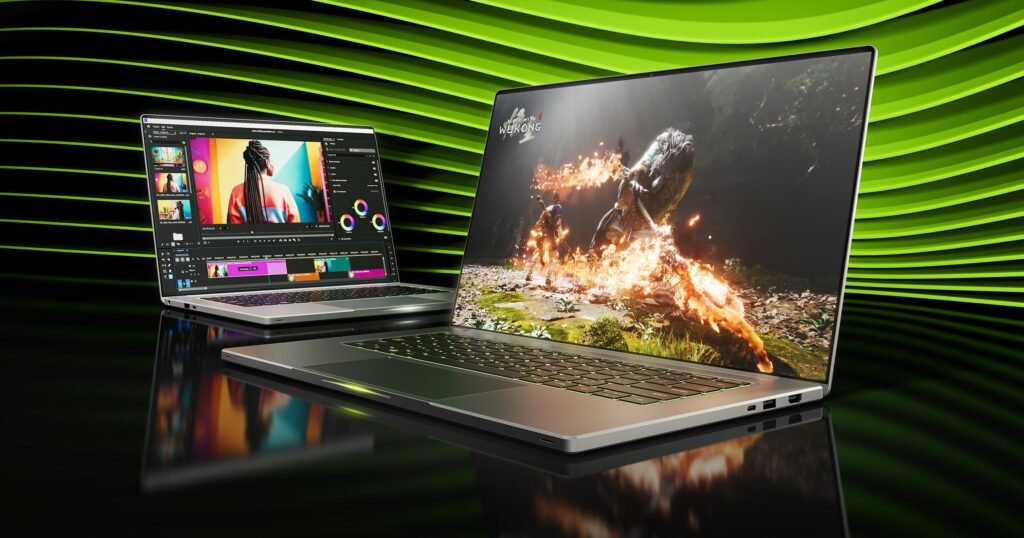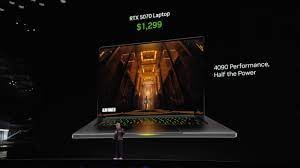The world of gaming laptops and high-performance computing is evolving at an astonishing pace, and one of the key drivers of this evolution is the graphics card. In 2025, all eyes are on NVIDIA’s GeForce RTX 50 series GPUs, particularly the much-anticipated RTX 5090. As technology enthusiasts, gamers, and creative professionals seek faster, more efficient machines, this next-gen GPU line is setting a new benchmark for performance, power efficiency, and AI-enhanced features.

The Evolution of NVIDIA GPUs
NVIDIA has long held a dominant position in the discrete GPU market. The RTX 30 and 40 series revolutionized graphics performance by introducing ray tracing, AI-based image enhancement (DLSS), and improved thermal efficiency. However, the RTX 50 series aims to go several steps further — not just in raw performance, but in smarter processing, better power management, and integration with cutting-edge AI technologies.
Built on the Blackwell GPU architecture, the RTX 50 series offers a radical leap in efficiency and processing power. The architectural improvements allow for denser transistor packing, higher clock speeds, and vastly improved AI workload handling, making it a favorite not only for gamers but also for developers, animators, and researchers relying on GPU acceleration.
RTX 5090: Performance Redefined
At the top of the stack sits the GeForce RTX 5090, often compared to a workstation-class GPU with a consumer-friendly interface. Early benchmarks show significant gains of up to 70% in ray-traced rendering and nearly double the performance in AI upscaling when compared to the RTX 4090.
Key improvements include:
- Increased CUDA core count: Boosting parallel computing power, crucial for tasks like 3D rendering and video editing.
- Improved ray tracing cores: Delivering more realistic lighting and shadow effects in games and simulations.
- Fourth-gen Tensor Cores: Enhanced for AI-based features like DLSS 4.0, which offers better frame generation and clarity.
- Lower power draw: Thanks to 3nm manufacturing processes, offering better battery life in laptops without sacrificing performance.
DLSS 4.0 and AI-Assisted Gaming
One of the standout features of the RTX 50 series is the integration of DLSS 4.0 (Deep Learning Super Sampling). While DLSS 3 introduced AI-generated frames and better frame pacing, DLSS 4.0 takes things further by predicting entire frames using neural networks. This results in smoother gameplay, even at ultra settings on 4K monitors.
More importantly, DLSS 4.0 is increasingly compatible with major game engines like Unreal Engine 5 and Unity, allowing developers to optimize their games out of the box for RTX 50-series GPUs.
Gamers are now experiencing AI-enhanced realism, not just through textures and frame rates but in behavior prediction, physics modeling, and character interactions — all accelerated by NVIDIA’s AI processing pipeline.
GeForce RTX 50 Series in Laptops
The arrival of RTX 50 GPUs in laptops is particularly exciting. With laptop variants of the 5070, 5080, and 5090, users now get desktop-class performance in a portable form factor. This opens up possibilities for:
- AAA gaming on ultra settings without external GPUs
- Real-time 4K video editing and rendering
- Portable AI development and model training
- On-the-go 3D modeling and CAD workflows
Laptop manufacturers like ASUS, Alienware, MSI, and Razer have already announced premium models featuring RTX 50 GPUs with improved thermal designs and ultra-high refresh rate displays (up to 360Hz).
A Boon for Creators and Professionals
The RTX 50 series is not only a win for gamers but a game-changer for creators. Applications like Adobe Premiere Pro, Blender, Autodesk Maya, and DaVinci Resolve are being optimized to take full advantage of the new Tensor and RT cores. For video editors, that means faster encoding times; for 3D artists, real-time ray tracing; and for AI researchers, enhanced model training with reduced latency.
Moreover, the NVENC/NVDEC encoder/decoder upgrades in the 50 series allow for higher quality streaming, making it a go-to for streamers on platforms like Twitch and YouTube who want uncompromised visuals with minimal system strain.
Sustainability and Efficiency
Interestingly, NVIDIA has also focused on energy efficiency in this series. The RTX 5090 and its siblings consume significantly less power than their 40-series counterparts for similar workloads, thanks to architectural improvements and smart energy allocation.
In a time when eco-conscious computing is becoming more important, the RTX 50 series hits a sweet spot between high performance and responsible energy usage — especially valuable in laptops where battery life matters.
Final Thoughts: Should You Upgrade?
If you’re a gamer, content creator, or a tech enthusiast seeking cutting-edge performance, the GeForce RTX 50 series is an undeniable upgrade. With better power efficiency, groundbreaking AI features, and seamless 4K performance, the RTX 5090 and its siblings are shaping the future of laptops and desktops alike.
As more software and games optimize for the RTX 50 architecture, its potential will only grow. Whether you’re building a workstation, upgrading your gaming rig, or buying a next-gen laptop, NVIDIA’s new GPUs are setting the gold standard for 2025 and beyond.













